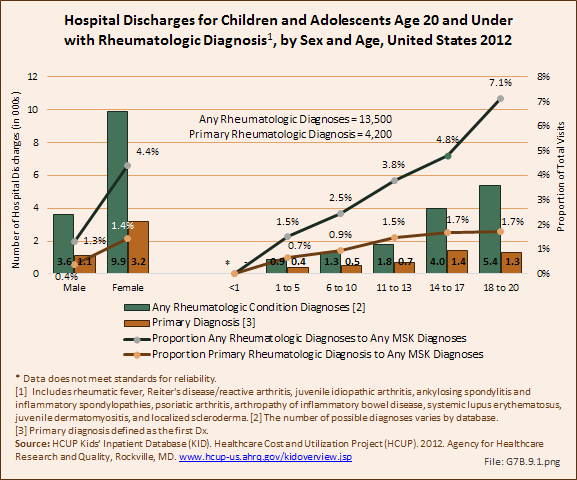Musculoskeletal pain syndromes, including amplified musculoskeletal pain, juvenile primary fibromyalgia syndrome, reflex sympathetic dystrophy, benign hypermobility, and benign limb pains, are common diagnoses in the pediatric population. A systematic review examining the prevalence of chronic musculoskeletal pain found a range of prevalence rates between 4% and 40% in children. Rates were generally higher in girls and increased with age.1 It is estimated that 5% to 8% of new patients presenting to North American pediatric rheumatologists have a musculoskeletal pain syndrome.2
Amplified musculoskeletal pain and juvenile fibromyalgia syndrome are related conditions with the common feature of diffuse pain involving at least three major body parts for at least 3 months. Patients also typically have sleep disturbance and other somatic complaints, such as headaches and abdominal pain. Reflex sympathetic dystrophy (RSD), now also called complex regional pain syndrome (CRPS), is a form of amplified pain in which autonomic dysfunction develops in an extremity, often following injury or trauma. The affected limb becomes swollen and discolored and the area can be very painful with light touch (allodynia). The recommended treatment for these conditions includes restoring normal sleep patterns, a therapy program with a focus on exercise and desensitization, and cognitive behavioral therapy. Some patients require treatment in an in-patient setting.3
Benign limb pains, also sometimes referred to as “growing pains,” are most common in children age 2 to 5 years. Children with benign limb pains tend to complain of pain at night, often awaking from sleep due to pain. These symptoms tend to resolve with age. Benign hypermobility is diagnosed in patients who have hypermobile joints4, without an underlying connective disuse disorder. This condition is common, affecting 8% to 20% of White populations. Anterior knee pain and back pain are more common in hypermobile vs nonhypermobile individuals.2
- 1. King S, Chambers CT, Huquet A, et al: The epidemiology of chronic pain in children and adolescents revisited: A systematic review. Pain 2011;152(12):2729-2738.
- 2. a. b. Cassidy JT, Petty RE, Laxer RM, Lindsley CB: Textbook of Pediatric Rheumatology, 6th ed. 2010. Elsevier Inc, Philadelphia, PA.
- 3. Childhood RND Educational Foundation, Inc.: Available at: StopChildhoodPain.org. Accessed February 19, 2015.
- 4. Hypermobile joints extend easily and painlessly beyond the normal range of motion. Hypermobility of the joints occurs when the tissues holding a joint together—mainly ligaments—are too loose. Often, weak muscles around the joint also contribute to hypermobility. The joints most commonly affected are the knees, shoulders, elbows, wrists, and fingers. Hypermobility is a common condition, especially in children, since their connective tissues are not completely developed.
Edition:
- 2014


